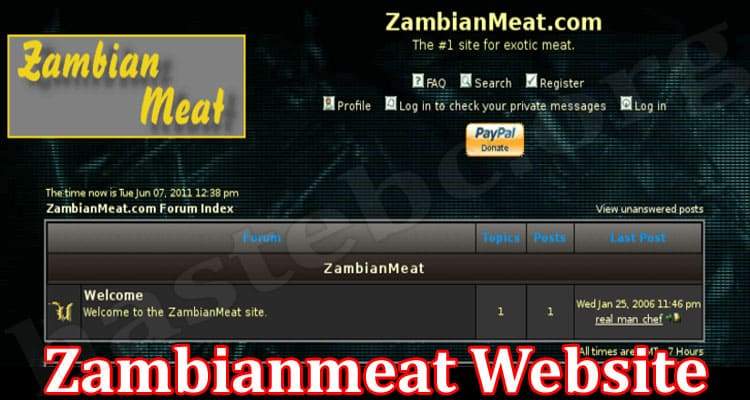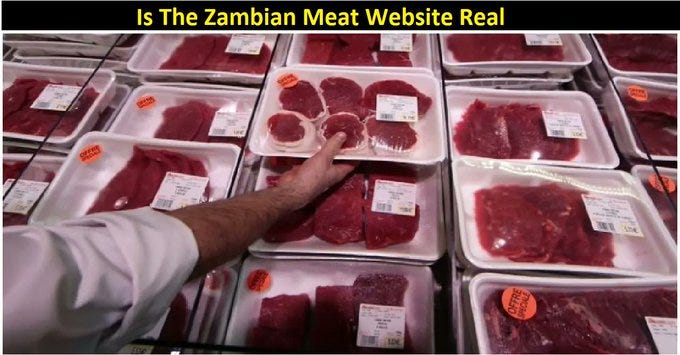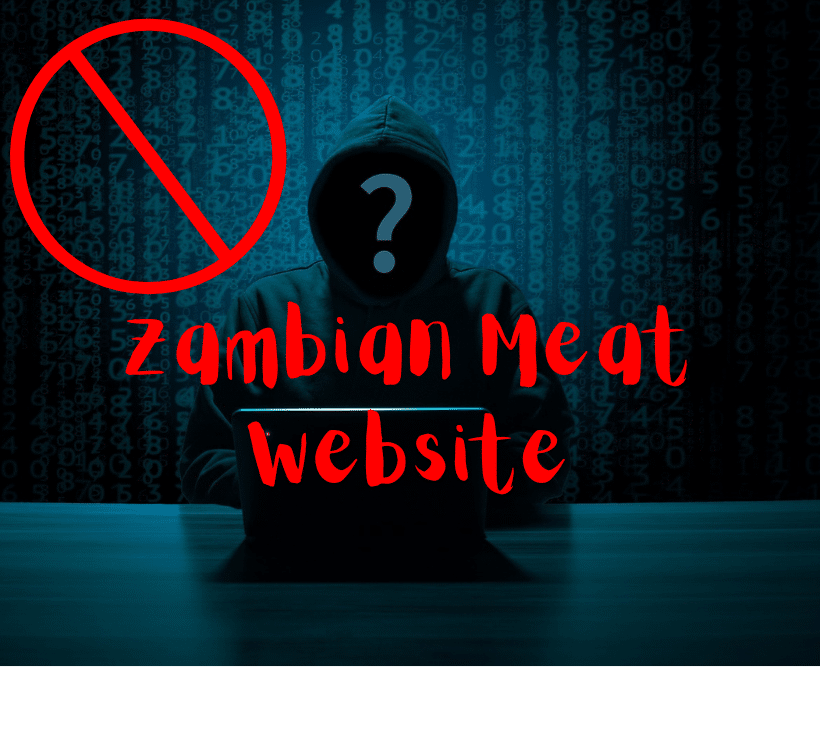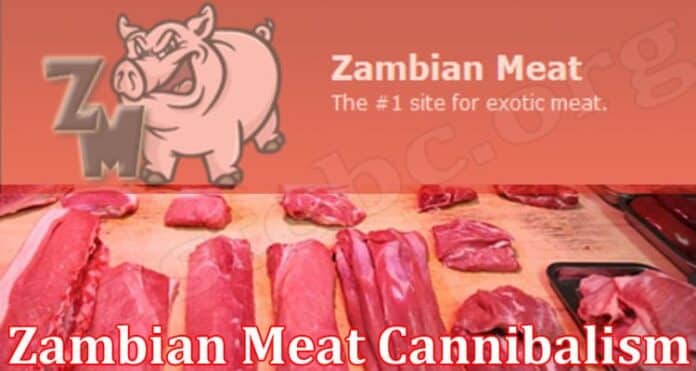In the age of the internet, few things can stir up as much controversy and debate as the online platforms that connect us. The Zambian Meat online site has found itself squarely in the centre of a heated argument, with activist groups clamouring for its shutdown while its staunch defenders label the critics as bigots.

This contentious issue raises questions about freedom of expression, the ethics of online communities, and the power of social media in our lives. Delving into this multifaceted topic, we will explore the complexities surrounding the Zambian Meat website and its recent moment in the spotlight following a shocking murder case involving its users.
Read Also: Beyond Borders: Your Journey to Finding the Top Forex Broker
What is Zambian Meat?
Zambian meat, a culturally significant yet controversial culinary tradition, can be found in various regions across Africa, with its roots firmly embedded in West Africa. This practise involves the consumption of human flesh by local populations.
While the primary source of Zambian meat is often subsistence agriculture, there are instances where this unusual delicacy transcends the boundaries of mere sustenance. The consumption of human flesh has sparked intense debates throughout history, prompting profound ethical and philosophical considerations.

One cannot overlook the plethora of documented cases of cannibalism that populate the annals of human history. Among these accounts, the Aztecs stand out as a particularly notorious example from ancient times.
In their rituals, they would sacrificially offer prisoners of war and subsequently partake in the gruesome act of cannibalism. Nevertheless, numerous instances of cannibalism, both historically documented and obscured by the mists of time, reveal a common thread of power struggles and survival instincts intertwined with this macabre practice.
In the modern era, the resurgence of cannibalism raises intriguing questions about its underlying causes. One perspective suggests that nutritional deficiencies within large populations, potentially exacerbated by contemporary lifestyles, may contribute to this unsettling phenomenon.
Alternatively, it could be linked to a psychological hunger—an insatiable craving for satisfaction with one’s diet that transcends the boundaries of convention.
Adding yet another layer of complexity to this disturbing practise, some individuals have reported experiencing overwhelming guilt and moral conflict when confronted with the consumption of human flesh.
These multifaceted factors underscore the need for a deeper examination of the intricate interplay between culture, history, psychology, and nutrition within the context of Zambian meat and cannibalism.
Read Also: What Is A Secret Lair? (2023)
The Zambian Meat Website: Is it Real?
The primary objective of the Zambian Meat Online Site is to offer its readers an immersive and authentic exploration of the world of Zambian meat. This unique endeavour raises thought-provoking questions about the nature of the meat consumed by individuals practising “Sapa” or “Sowa.”
It poses the intriguing possibility that these culinary traditions may involve the consumption of human flesh. The Zambian meat website serves as an interactive platform, providing a space for people to engage in in-depth discussions and share their perspectives on the intricate subject of Zambian meat.
Within this virtual forum, users have the opportunity to dissect and analyse the cultural, historical, and ethical dimensions of this controversial practise. Notably, the website features a collection of visuals that depict instances of Zambian meat cannibalism.

These images gained widespread attention and sparked intense debate when they became associated with a high-profile murder case that was thrust into the media spotlight. The juxtaposition of these visuals with the murder case catalyses exploring the complex and often unsettling aspects of Zambian meat consumption.
It is essential to acknowledge that the consumption of human flesh has a long history that spans thousands of years, with motives ranging from dire circumstances to pure curiosity. The acceptability of such practises, however, largely hinges on the cultural traditions and societal norms specific to the community in question.
The Zambian meat online site endeavours to shed light on this multifaceted and controversial subject, encouraging a nuanced exploration of the diverse views and motivations underlying human flesh consumption within different societies and contexts.
Zambian Meat Cannibalism, Tiktok
Read Also: The Hyena Men of Nigeria: Who are they and controversies around them
Controversies Surrounding Zambian Meat Website

In recent developments, law enforcement authorities have taken into custody a detective who stands accused of committing a heinous crime involving an individual he allegedly met online through the Zambian Meat website.
The suspect in question is a 48-year-old detective sergeant employed within the crime investigation department at the Dresden police headquarters. He now faces grave charges, including suspicion of murder and the disturbing accusation of “distribution of body parts via the Internet.”
The Zambian Meat cannibalism website, which has been operational for three years, was primarily accessible in the German language. According to information available on the group’s official website, the platform boasts a total of approximately 3,500 registered users.
Within this user base, approximately 20 percent are considered active participants who engage in various sections and discussions hosted within the forums.
These unfolding events underscore the grave nature of the allegations surrounding the detective’s involvement with the Zambian Meat website, casting a sombre shadow over the previously obscure online platform.
The situation serves as a chilling reminder of the potential dangers that can lurk within the depths of the internet, where seemingly innocuous forums can become the backdrop for unimaginable crimes.
See Also: Dinar Guru: What Does it Mean?
Conclusion
The topic of Zambian meat, its cultural implications, and the recent unsettling events surrounding it demand careful consideration. Zambian meat represents a complex and controversial aspect of culinary culture, raising profound questions about ethics, history, and societal norms.
The recent arrest of a detective for alleged involvement in a gruesome crime associated with the Zambian meat website serves as a stark reminder of the dark underbelly that can exist within online communities.
As discussions around this topic continue, it is essential to approach it with sensitivity and a nuanced perspective, recognising that cultural practises can be deeply ingrained and multifaceted. The Zambian meat phenomenon is a testament to the intricate interplay between tradition, history, and human behaviour.
Moving forward, it is crucial to address the ethical and legal dimensions of practises related to meat while respecting the cultural context in which they arise. Additionally, as we navigate the digital landscape, it is imperative to remain vigilant and promote responsible online behaviour to prevent harm and ensure the safety of individuals both online and offline.
FAQs for Zambian Meat
What is the story of Zambian meat?
The programme centred around an individual named James Brunton, who made a shocking assertion that he had taken another person’s life and consumed their flesh following an encounter on a website known as Zambian Meats. Brunton adopted the unsettling online alias “Chefmate50,” a name that, upon reflection, carries disturbing connotations.
What is the most consumed meat in Zambia?
When it comes to meat consumption, beef takes the top spot as the most favoured choice, followed closely by pork, chicken, rabbit, mutton or lamb, and goat meat. Cattle play a pivotal role, accounting for a significant 61% share of the meat and milk consumed within the country.
What is the most consumed food in Zambia?
Maize, commonly known as corn, is central to Zambia’s diet, serving as the country’s staple food. Zambians prepare maize in various ways, including roasting or boiling when the corn is ripe but still green.
